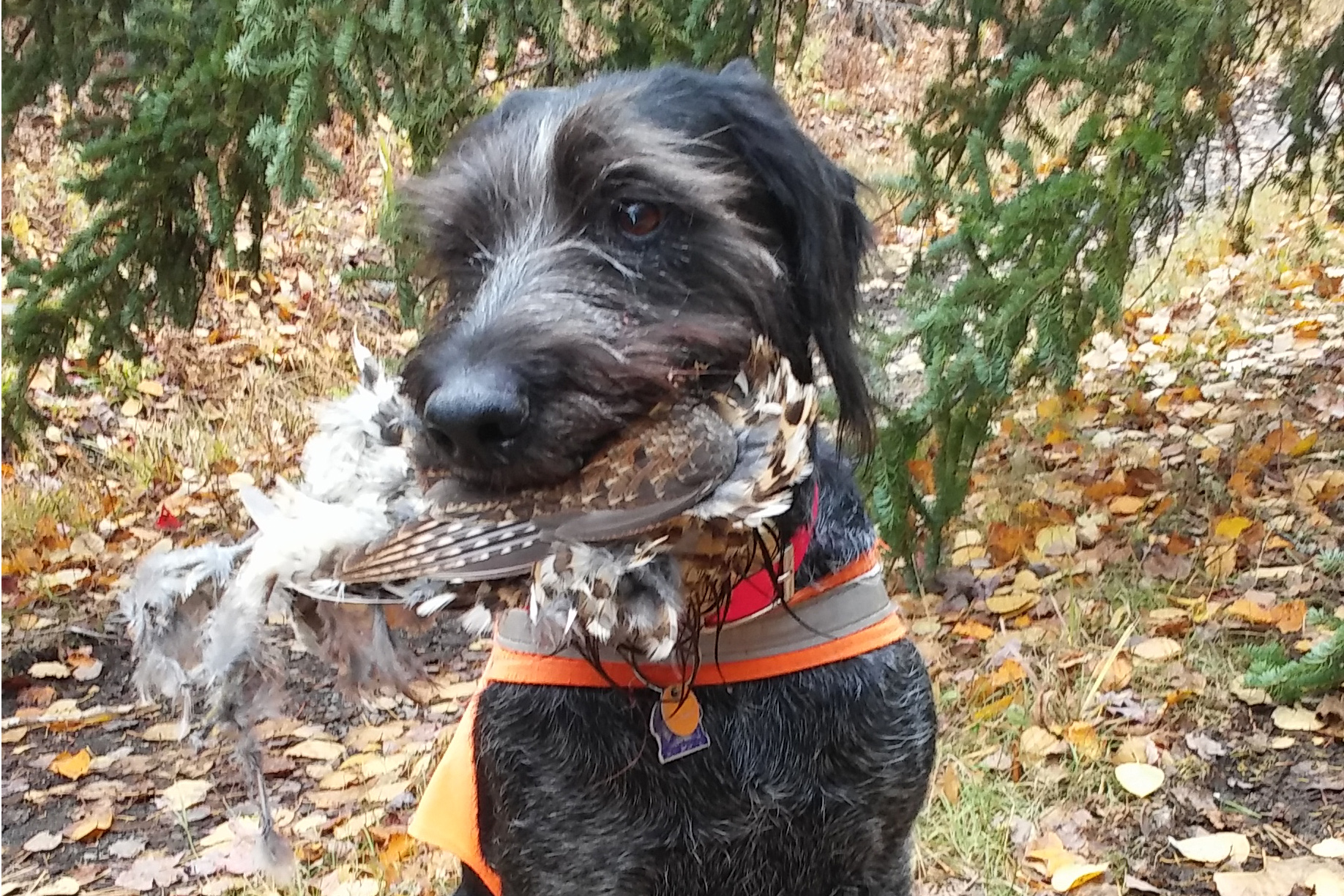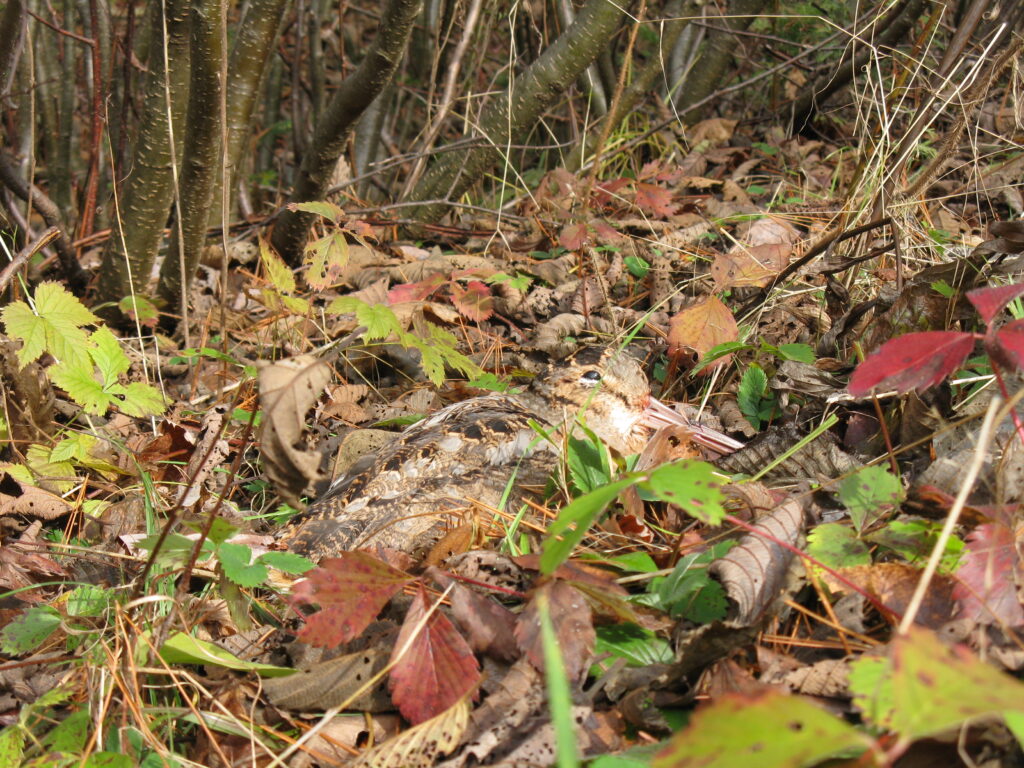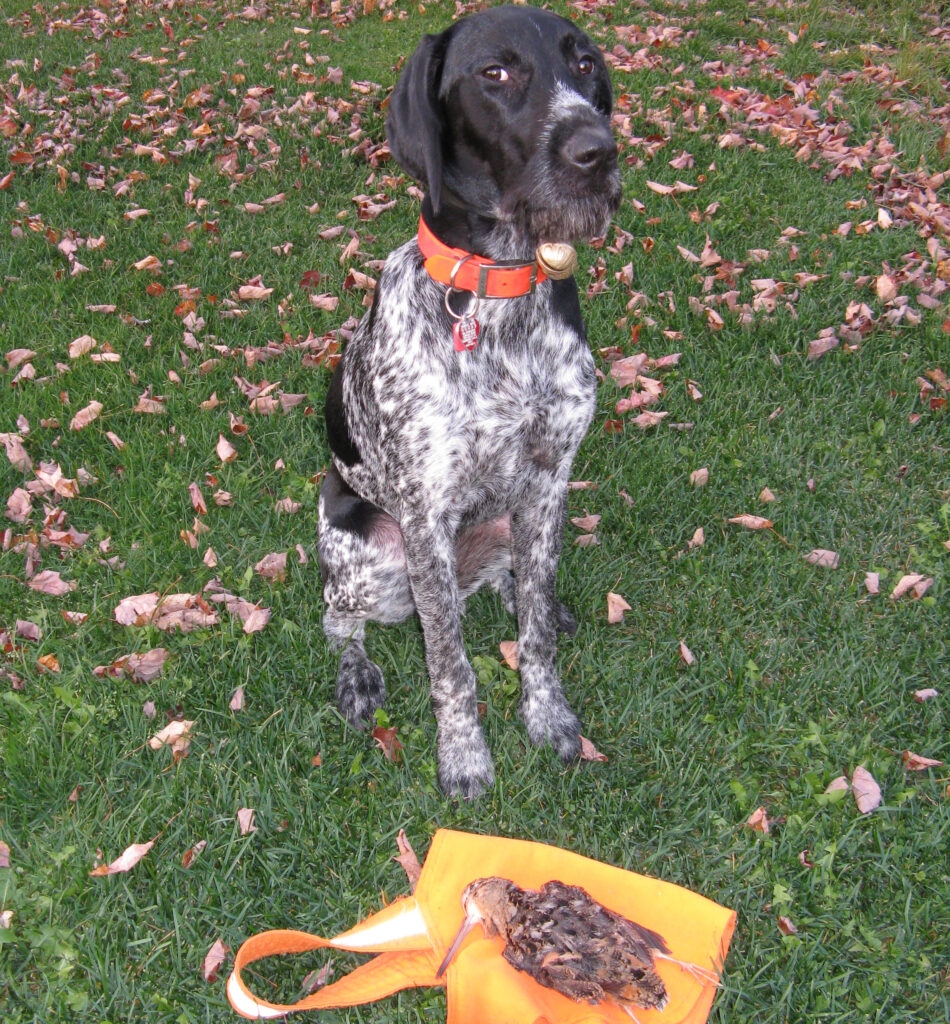
As we hunted, our four-legged companion scouted ahead. The well-trained pointer worked close to us as we explored the brushy cover, flashes of white and the tinkling of his collar bell giving us his location. When the bell suddenly went silent, the dog’s owner loudly said, “Point,” and the experienced wingmen moved forward.
Being a rookie to woodcock hunting, I stood mesmerized. A small, brownish bird with a long bill rose, seeming to levitate like a helicopter, then winged away as two shotgun blasts knocked down leaves, branches and tamarack sprills, but not the bird.
Area bird hunters are enjoying excellent results this month, and Maine’s smallest quarry is offering up big excitement. Woodcock are actually migrating game birds that move through our region in waves as they migrate from Canada to warmer southern climes. They are odd-shaped, long-billed, big-eyed birds with feathers that offer a perfect fall camouflage among the leaves and dead grass. Their surprising flushes, fast and unpredictable flights through brush and tree tops and their fleeting travel patterns drive hunters crazy, and keep them coming back day after day, year after year.
Northern quail and timberdoodle are two nicknames given to this little bird that is related to a shorebird, the snipe, and is itself transplanted from the seashore to upland country. Many sportsmen refuse to waste time locating woodcock, nor will they waste a shell on a gamebird that weighs less than half a pound and requires three to make up a meal. For pure wingshooting sport, however, few game birds offer so much challenge and enjoyment.

Old farmsteads and fields allowed to go to second growth are excellent woodcock locations. Nature’s reclaiming of farmland offers perfect timberdoodle cover, but within three to five years such spots become overgrown and useless. Alder runs are among the best spots to locate woodcock, especially when interspersed with young pine and cedar. Stands of poplar trees and brushy shorelines of streams and bogs are top rate as well.
Goldenrod is nearly always found in good woodcock areas, and with experience, sportsmen learn to recognize when good covers turn to run-of-the-mill woods. During migration flights, resting woodcock will normally ingest six to eight ounces of worms, equal to their own weight. Soft fertile ground supports earthworms and therefore attracts timberdoodle. Aroostook abounds with woodcock country, and generally a good spot can be located within a half hour of most hunters’ homes.
There’s little question that the most productive woodcock outings are accomplished with dogs since the tiny gamebirds hold well for points. Non-pointing, retrieving dogs such as Labradors and springer spaniels will flush birds, but the key is to have them hunt close. Given the thickness of most covers, a dog 30 yards away is probably completely out of sight. The true joy of woodcock hunting is walking behind a well-trained pointer or setter, and Brittany spaniels and German shorthairs are very popular. Again, keeping the dog working close and using a bell or beeper collar are prime requirements of consistent success.
Bird hunters can successfully find woodcock without canine assistance. Although they have the ability to run away, timberdoodle prefer to hold tight and let danger pass. Birds will flush when closely approached or if they feel they have been spotted. A few may be flushed by walking straight through a cover, but ambling a round-about course with stop-and-and go movement will bring up far more. Stopping every so often not only rests the hunter, but makes the holding bird nervous and causes them to flush. When stopped, the gunner is far more balanced for shooting than when walking and ducking through brush.

When solo hunters drop a bird and there’s no dog to retrieve it, locating the well-camouflaged woodcock in the leaves can be difficult. Always follow the bird’s flight path closely after a shot. When searching, use a circular method and hang your orange hat on a high tree limb for perspective of where the search began. When there are two hunters and two sets of eyes, locating downed birds becomes simpler.
Most woodcock enthusiasts choose a 20-gauge and use size 7 ½ or 9 birdshot. Shots are generally close, so improved cylinder or modified chokes are excellent choices. Thick brush can soak up a lot of shot, but the small gamebirds don’t require many pellets to bring down. Short-barrel, lightweight shotguns are preferred in the heavy cover since they swing quickly and easily.
Woodcock season ends Nov. 19, and hunting is peaking right now as hoards of flight birds are stopping over to feed throughout Maine. Many nearby covers are producing six or eight flushes per outing, and a couple of days later a new bunch arrives. Hunters need to take advantage of this constant influx of birds.
It’s been more than 50 years since my first woodcock hunt, and I watched the unique flush instead of shooting. Years of wonderful hunts for Maine’s smallest gamebird have improved my shooting reaction, but I’m still in awe every time a timberdoodle takes wing.
Newcomers to the sport will soon become enthralled with this small quarry and the fast action it provides.







